In the deepest, most hostile depths of our planet’s oceans, where crushing pressure would flatten a human instantly and toxic chemicals seep from the Earth’s core, lives one of nature’s most extraordinary engineers. This isn’t some creature from science fiction—it’s real, it’s alive, and it’s building armor from actual metal. Meet the scaly-foot snail, a remarkable gastropod that has solved one of biology’s greatest challenges by becoming the only known animal on Earth to incorporate iron into its protective shell.
The Living Metal Factory

The scaly-foot snail doesn’t just stumble upon iron and slap it onto its shell. This creature operates like a sophisticated biological foundry, actively mining, processing, and incorporating iron sulfides into its shell structure. The process begins when the snail absorbs dissolved iron from the surrounding hydrothermal vent waters through specialized cells.
What makes this even more incredible is the precision involved. The snail doesn’t randomly dump iron onto its shell—it strategically places iron sulfide particles in specific layers and patterns. Think of it like a master craftsman who knows exactly where each piece of armor needs reinforcement. The iron becomes integrated at the molecular level, creating a composite material that would make modern engineers jealous.
Deep-Sea Fortress Under Pressure
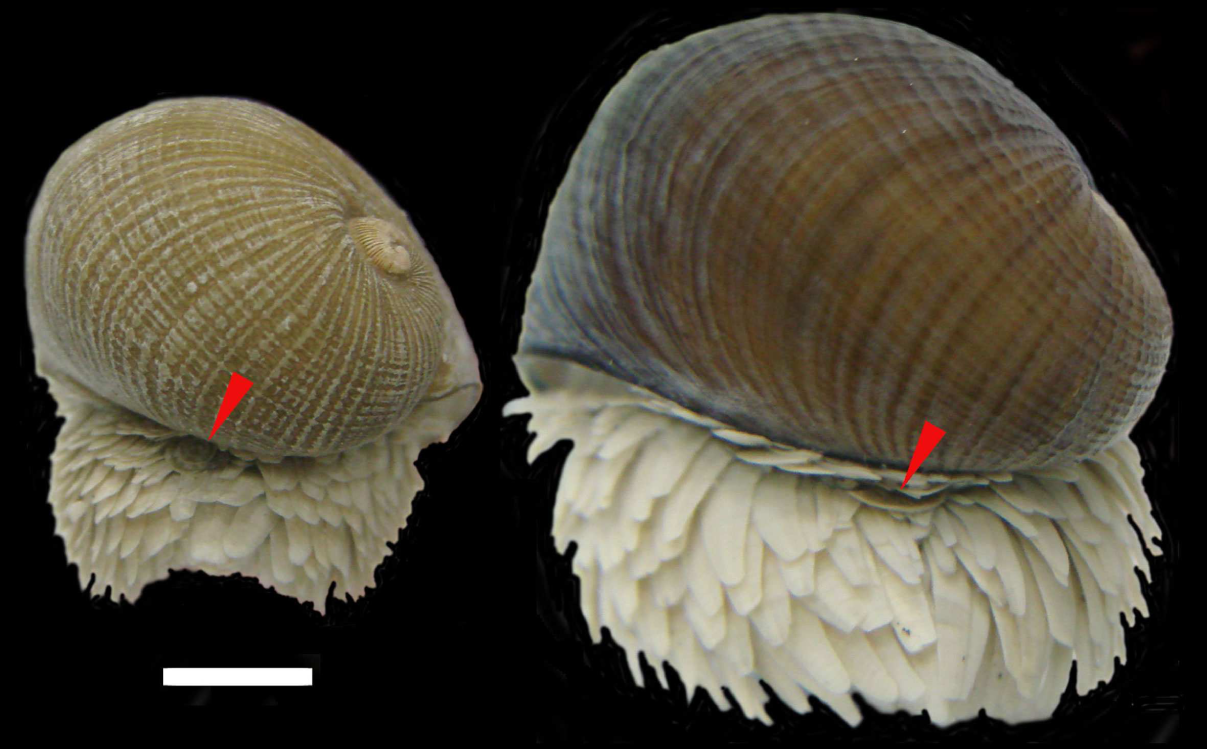
Living at depths of up to 2,900 meters below sea level, these snails face conditions that would destroy most life forms. The pressure alone is nearly 300 times greater than what we experience at sea level. Yet somehow, their iron-reinforced shells not only survive but thrive in this crushing environment.
The shells must withstand not just pressure, but also the constant bombardment of predators’ attacks. Crabs with claws powerful enough to crack regular mollusk shells find these iron-armored snails frustratingly difficult to penetrate. It’s like trying to bite through a medieval knight’s chainmail—possible, but requiring significantly more effort.
The temperature variations around hydrothermal vents create additional stress that would crack ordinary shells. But the iron-sulfide reinforcement provides flexibility and strength that allows these remarkable creatures to expand and contract without breaking.
Chemical Warfare in the Abyss

The water surrounding hydrothermal vents contains enough toxic chemicals to kill most marine life within minutes. Hydrogen sulfide, heavy metals, and acidic compounds create a lethal cocktail that would dissolve regular calcium carbonate shells like sugar in water. The scaly-foot snail’s iron armor provides crucial protection against this chemical assault.
The iron sulfides in their shells act like a molecular shield, neutralizing many of the corrosive compounds before they can reach the snail’s soft tissues. This isn’t just passive protection—it’s an active chemical defense system that continuously processes and neutralizes threats. The snail essentially turns the hostile environment’s weapons against itself, using the very iron that makes the water toxic as building material for protection.
Three-Layer Defense System
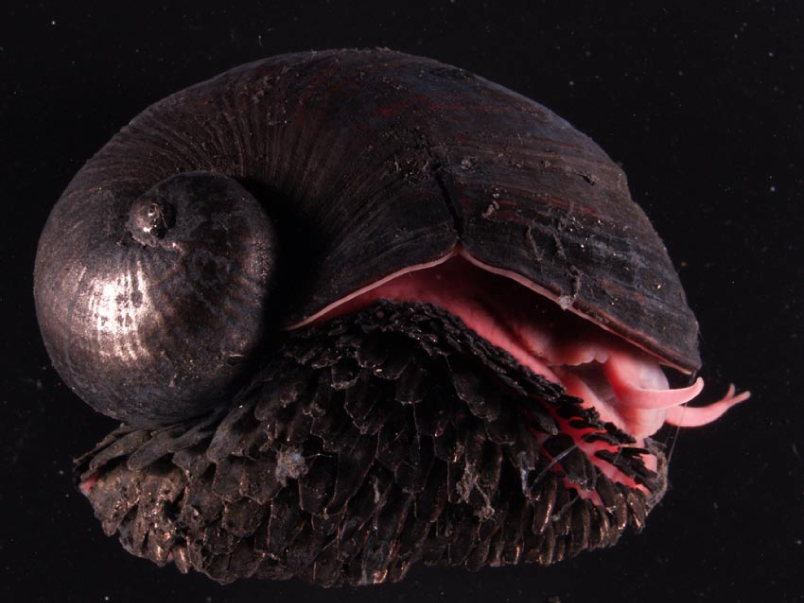
The scaly-foot snail’s shell isn’t just iron-plated—it’s a sophisticated three-layer defense system that rivals modern military armor design. The outer layer contains the iron sulfides that give the shell its metallic properties and distinctive black coloration. This layer takes the brunt of physical attacks and chemical exposure.
Beneath this lies a middle layer of organic proteins that provide flexibility and shock absorption. Think of it as the padding inside a helmet—it’s not the hardest part, but it’s crucial for distributing impact forces. The innermost layer consists of aragonite, a form of calcium carbonate that provides structural integrity and connects to the snail’s soft body.
Each layer serves a specific purpose, and together they create a defensive system that’s greater than the sum of its parts. The iron provides hardness, the proteins provide flexibility, and the aragonite provides the foundation—a perfect example of biological engineering.
Magnetic Properties That Baffle Scientists

Perhaps the most mind-bending aspect of the scaly-foot snail is that its shell exhibits magnetic properties. The iron sulfides create a shell that can be influenced by magnetic fields, making this the only known magnetic animal on Earth. Researchers have discovered that strong magnets can actually attract these snails, though the biological significance of this property remains largely mysterious.
Some scientists theorize that the magnetic properties might help with navigation in the dark depths where traditional landmarks don’t exist. Others suggest it could be an unintended consequence of the iron incorporation process. What we do know is that this magnetic shell makes the scaly-foot snail unique among all known life forms.
The implications of magnetic biological structures could revolutionize our understanding of how life adapts to extreme environments. It opens up possibilities we’ve never considered before about how organisms might use Earth’s magnetic field.
The Discovery That Changed Everything
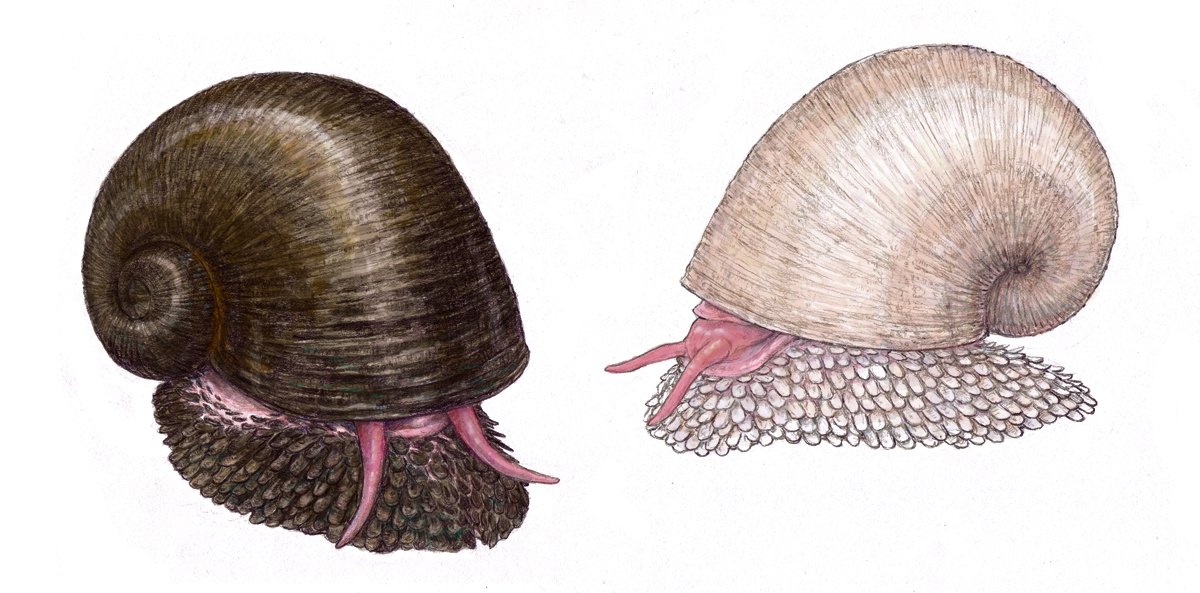
The first scaly-foot snail was discovered in 2001 during deep-sea exploration of the Kairei hydrothermal field in the Indian Ocean. Scientists initially couldn’t believe what they were seeing through their submersible cameras—a snail with what appeared to be metallic scales covering its soft foot.
When samples were finally brought to the surface and analyzed, the scientific community was stunned. Here was proof that life could not only survive in some of Earth’s most extreme conditions but could actually thrive by incorporating metal into biological structures. The discovery challenged fundamental assumptions about the limits of biological adaptation.
The excitement in the scientific community was palpable. Marine biologists, materials scientists, and evolutionary researchers all wanted to study this remarkable creature that seemed to blur the line between biology and engineering.
Evolution’s Master Class in Problem Solving

The evolution of iron armor in these snails represents one of nature’s most creative solutions to an environmental challenge. Over millions of years, these creatures developed the ability to not just tolerate iron-rich environments but to actually harvest and use the metal for protection. This isn’t gradual adaptation—it’s revolutionary biological innovation.
The genetic mechanisms that allow iron incorporation are still being studied, but early research suggests multiple genes working in concert to control iron uptake, processing, and deposition. It’s like having a entire genetic toolbox dedicated to metallurgy—something no other animal possesses.
This evolutionary achievement raises fascinating questions about the potential for other organisms to develop similar capabilities. Could other species learn to incorporate metals into their biology? The scaly-foot snail proves it’s possible.
Biomimicry Gold Mine
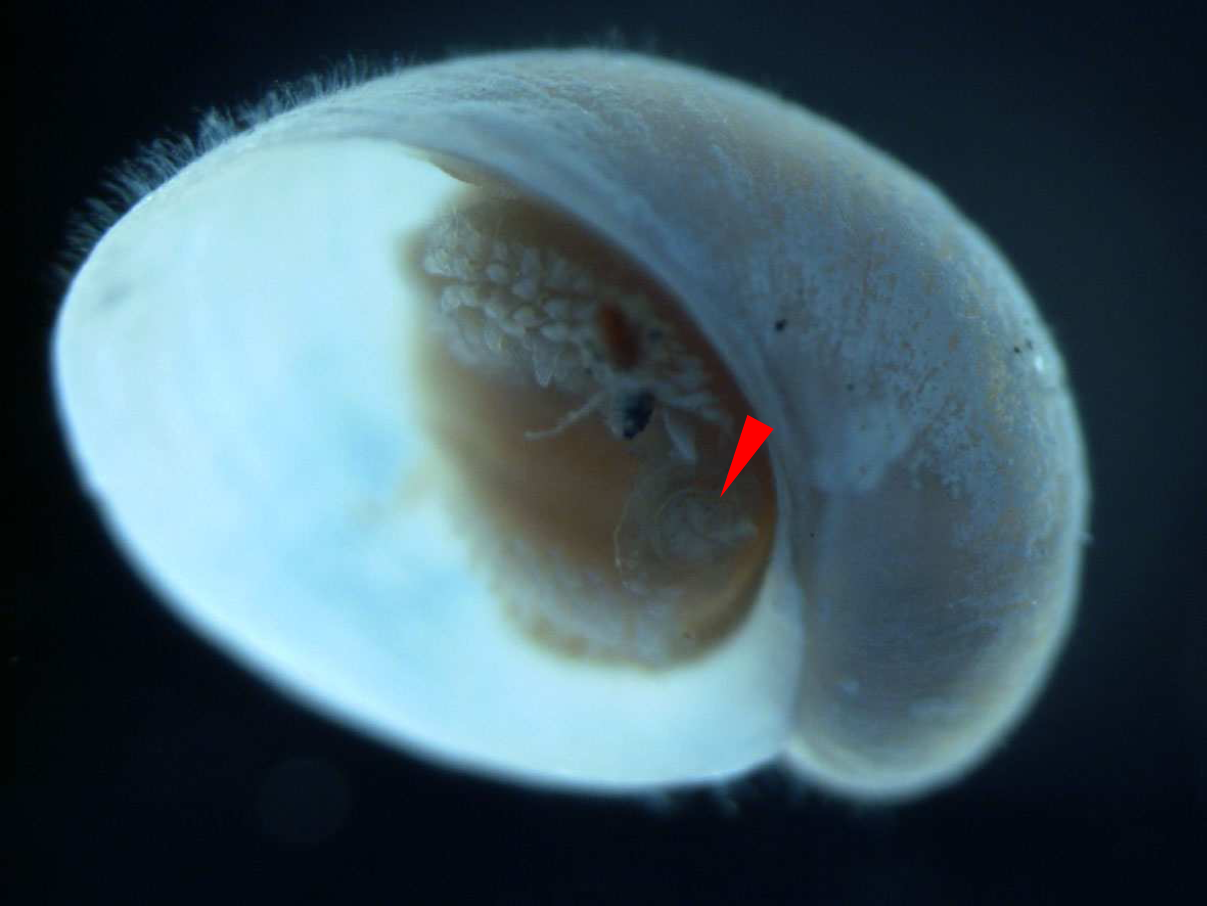
Materials scientists are studying these snails intensively, hoping to unlock the secrets of their biological metal-working process. The goal is to develop new composite materials that combine the strength of metal with the flexibility of organic compounds. Current research focuses on replicating the three-layer structure in synthetic materials.
Early attempts at biomimetic armor based on the snail’s design have shown promising results. The combination of hard outer layers with flexible inner structures could revolutionize everything from body armor to spacecraft shielding. The snail’s approach to gradual layer formation could also inspire new manufacturing techniques.
The potential applications extend far beyond armor. The iron-organic composite structure could lead to breakthroughs in everything from medical implants to construction materials. Nature has provided the blueprint—now we just need to figure out how to build the factory.
Thermal Regulation Through Metal
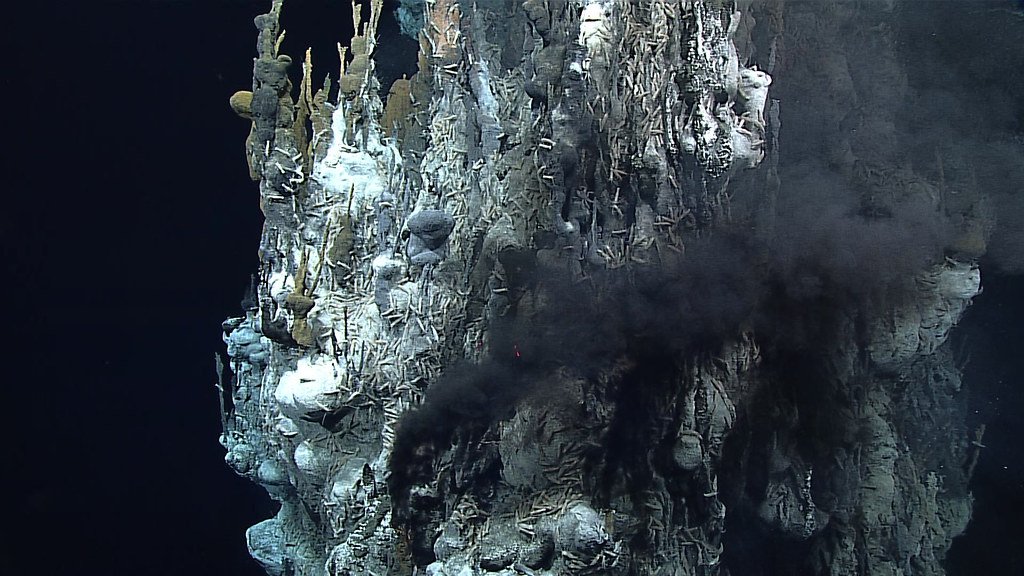
Living around hydrothermal vents means dealing with extreme temperature fluctuations that can swing from near-freezing to over 400°C in a matter of centimeters. The scaly-foot snail’s iron-enhanced shell provides crucial thermal regulation that helps manage these dramatic temperature changes.
Iron has excellent thermal conductivity properties, which means it can quickly transfer heat away from sensitive areas. The snail positions itself strategically around vent openings, using its metallic shell like a heat sink to prevent overheating while still accessing the warm, nutrient-rich waters.
This thermal management system allows the snail to occupy ecological niches that would be impossible for other organisms. It’s essentially wearing a built-in air conditioning system that runs on pure physics rather than energy expenditure.
Predator-Proof Design
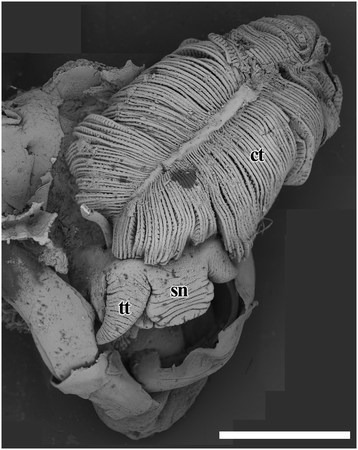
The deep-sea environment around hydrothermal vents hosts some formidable predators, including massive crabs with crushing claws and other mollusks with drilling capabilities. The scaly-foot snail’s iron armor provides protection that goes far beyond what traditional calcium carbonate shells can offer.
When a crab attempts to crush one of these armored snails, the iron sulfides in the shell distribute the force across multiple layers, often causing the attacker’s claws to slip rather than penetrate. It’s like trying to crack a ball bearing with your fingernails—the smooth, hard surface provides little grip for crushing attacks.
The iron armor also protects against drilling predators that bore through regular shells. The metallic layer is much harder to penetrate than calcium carbonate, forcing predators to expend significantly more energy for potentially less reward.
Ecosystem Engineering in the Deep
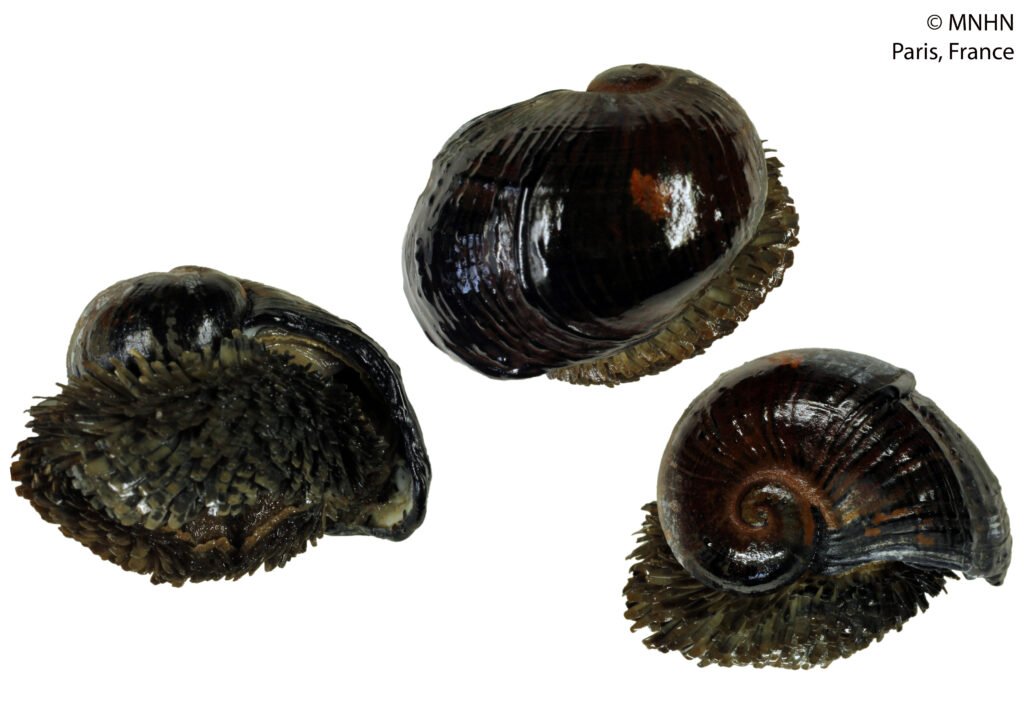
These armored snails don’t just survive in their extreme environment—they actively shape it. By processing iron from the water and incorporating it into their shells, they actually alter the local chemistry of their habitat. When they die, their iron-rich shells contribute to sediment formation and provide mineral resources for other organisms.
The snails also serve as mobile mineral processors, concentrating iron from dilute solutions and depositing it in specific locations. This biological mining operation creates microhabitats with different chemical properties that other species can exploit.
Their role as ecosystem engineers demonstrates how even small organisms can have outsized impacts on their environment. The scaly-foot snail is essentially a living mineral processing facility that reshapes its world one shell at a time.
Reproductive Mysteries

Despite extensive study, many aspects of the scaly-foot snail’s reproductive biology remain mysterious. How do they pass on the genetic information necessary for iron armor construction? Do newly hatched snails immediately begin incorporating iron, or does this ability develop over time?
Research suggests that juvenile snails have much thinner iron layers than adults, indicating that armor construction is a gradual process that continues throughout their lives. This makes sense from an energy perspective—young snails need to invest resources in growth before they can afford the luxury of heavy metal armor.
The mating behaviors of these deep-sea creatures are also largely unknown. Given their extreme habitat and relatively recent discovery, observing reproductive activities in the wild remains a significant challenge for researchers.
Conservation Concerns
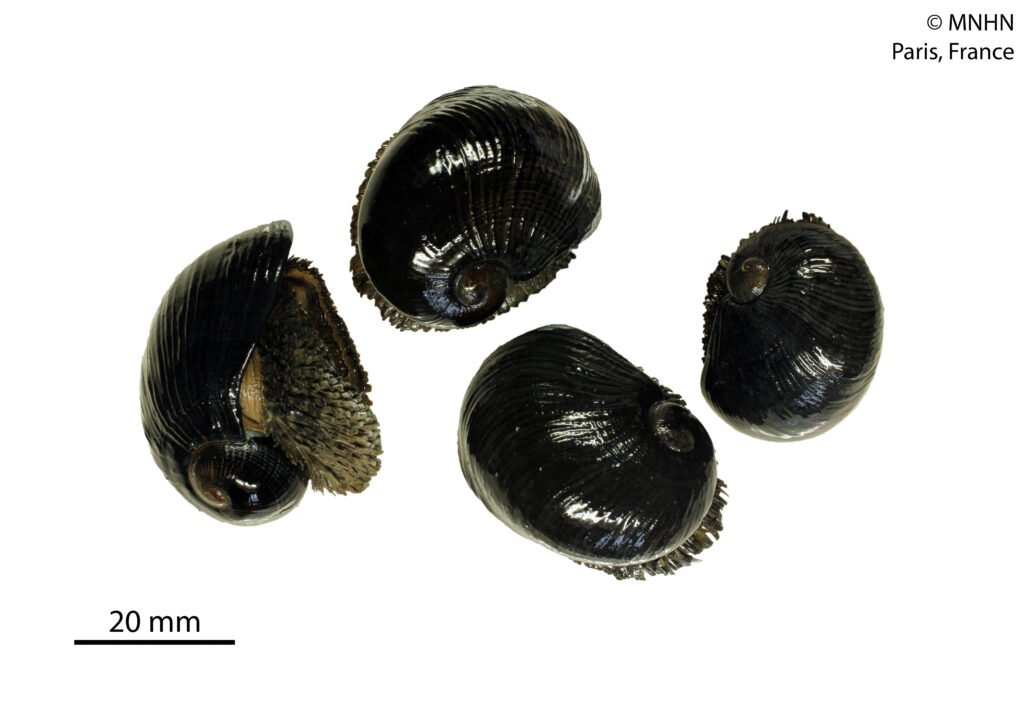
The scaly-foot snail faces a unique conservation challenge—its entire existence depends on a handful of hydrothermal vent sites in the Indian Ocean. These vents are not permanent features; they can shut down due to geological changes, eliminating entire populations in a matter of years.
Deep-sea mining operations pose another significant threat. The same mineral-rich environments that the snails call home are increasingly targeted for commercial metal extraction. Mining activities could destroy vent ecosystems before we fully understand their biological treasures.
Climate change adds another layer of concern, as changing ocean chemistry and temperature patterns could affect the delicate balance of conditions these snails require. Protecting this species means protecting some of the most remote and challenging environments on Earth.
Future Research Frontiers
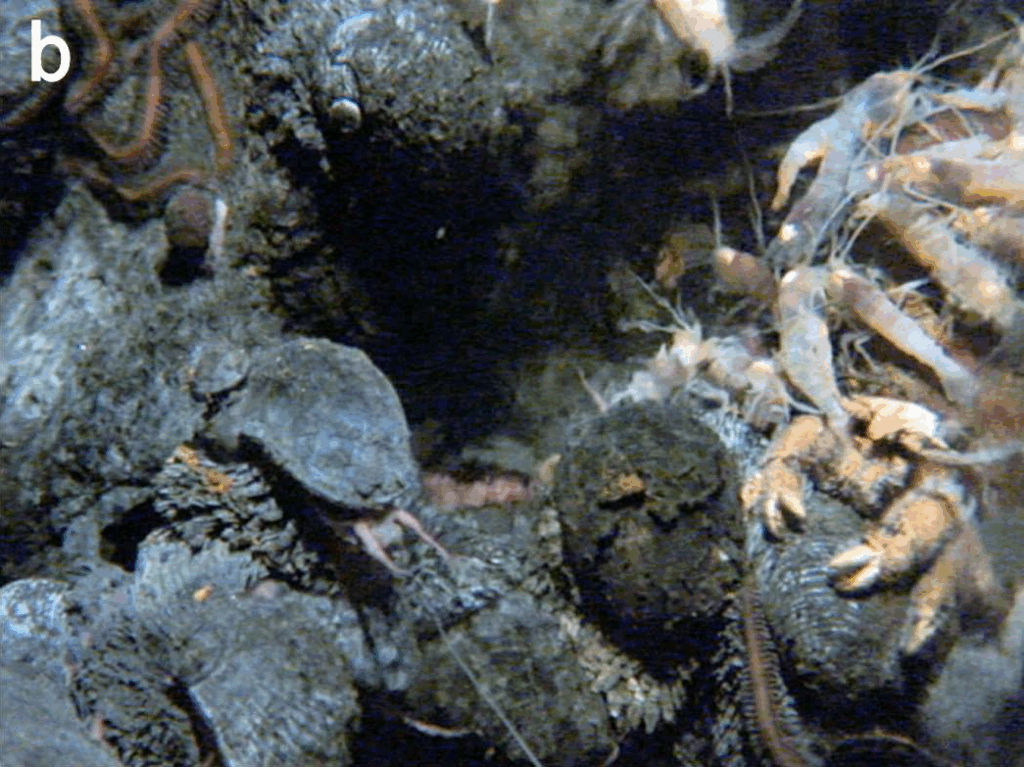
Scientists are just beginning to unlock the secrets of biological iron incorporation. Current research focuses on understanding the cellular mechanisms that allow these snails to process and deposit iron without poisoning themselves—a feat that could revolutionize our approach to metal toxicity in biological systems.
Genetic studies are revealing the complex molecular machinery required for iron armor construction. These findings could lead to breakthroughs in biotechnology, potentially allowing us to engineer other organisms with enhanced metal-processing capabilities.
The search for similar organisms continues in other extreme environments around the world. The discovery of the scaly-foot snail suggests that biological metal incorporation might be more common than previously thought—we just haven’t found the other practitioners yet.
The Bigger Picture
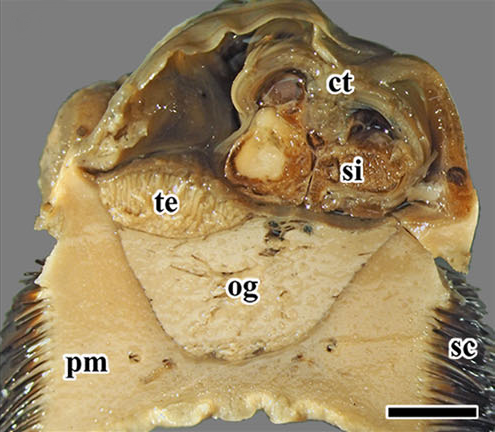
The scaly-foot snail represents more than just an interesting biological curiosity—it’s proof that life can find solutions to challenges we never imagined possible. This tiny creature has independently evolved capabilities that our most advanced technologies struggle to replicate.
Its existence expands our understanding of what’s possible in biology and challenges our assumptions about the limits of life on Earth. If organisms can evolve iron armor in the deep sea, what other impossible adaptations might be waiting to be discovered?
The snail also serves as a powerful reminder of how much we still don’t know about our own planet. In an age when we’re looking for life on other worlds, we’re still finding alien-like creatures in our own oceans that seem to operate by entirely different biological rules.
Conclusion: Nature’s Ultimate Engineer
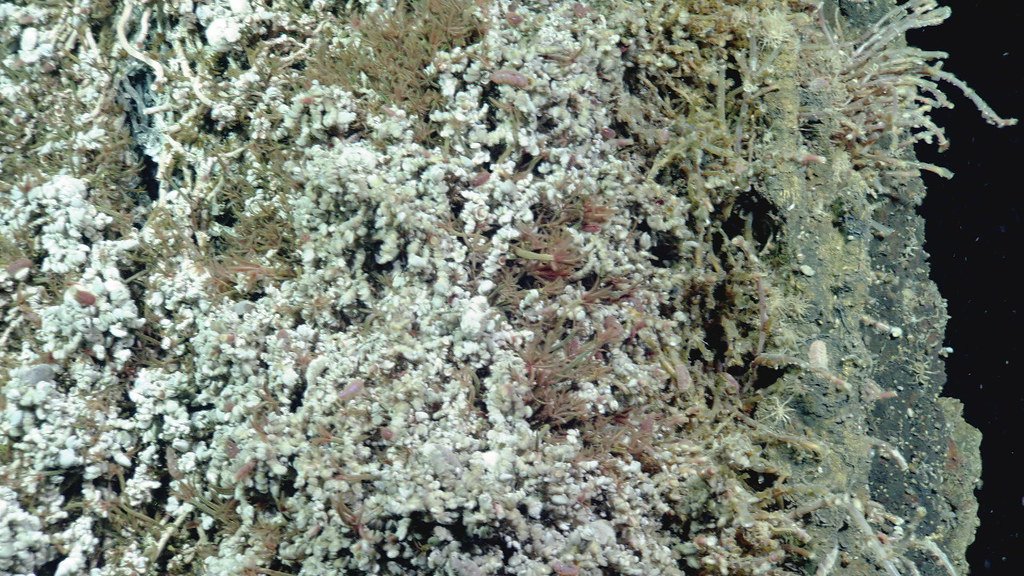
The scaly-foot snail stands as one of evolution’s most remarkable achievements—a living testament to life’s incredible adaptability and creativity. This small gastropod has accomplished something that no other known organism has managed: successfully incorporating metal into its biological structure to create functional armor.
From its sophisticated three-layer defense system to its mysterious magnetic properties, every aspect of this creature challenges our understanding of biological possibilities. The snail’s ability to thrive in one of Earth’s most hostile environments while wearing armor forged from the very toxins that would kill other organisms represents evolutionary problem-solving at its finest.
As we continue to study these remarkable creatures, they offer insights that could revolutionize materials science, biotechnology, and our understanding of life’s limits. The tiny snail with iron armor proves that sometimes the most extraordinary discoveries are hiding in the most unexpected places. What other biological impossibilities are waiting to be discovered in the vast unexplored regions of our planet?



